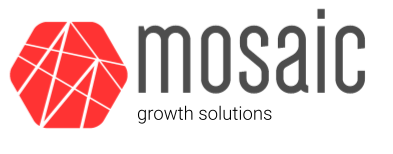A struggle many of our clients deal with is how to effectively manage marketing efforts in a way that is efficient, gives visibility on progress and resources and accomplishes goals within expected timelines. We have found that agile marketing is one of the best ways to achieve these objectives. With consumers expecting more relevant content, faster updates and personalization, it’s crucial that marketing organizations keep up with the ever-increasing demands required to successfully grow their business. In this blog post, we will discuss why agile marketing is so important, as well as how it can benefit your business in the long run. Read on to learn more!
What is Agile Marketing?
Agile marketing is a term used to describe a set of principles and practices that focus on speed, flexibility, and collaboration. Agile marketing teams are typically small and cross-functional, with members who are self-organized and empowered to make decisions.
The agile approach to marketing has its roots in the software development world, where the agile methodology was first proposed in the early 2000s. Agile marketing takes many of the same principles and applies them to the process of creating and executing marketing campaigns.
The main goal of agile marketing is to help organizations be more responsive to changes in the marketplace and deliver better results faster. By being more flexible and adaptable, agile marketers can better respond to opportunities and threats as they arise. And by working in smaller, more nimble teams, they can execute campaigns more quickly and efficiently.
There are many different ways to implement an agile marketing approach. But at its core, agile marketing is all about being fast, flexible, and collaborative.
The Agile Marketing Process
Agile marketing processes can vary, but a core component of most processes is that the team’s work is broken down into sprints.
What is an agile marketing sprint?
Sprints are a time-boxed, iterative approach to project management that helps teams move quickly and efficiently. Sprints vary in length, but to help keep flexibility and the process manageable we typically implement sprints of one to two weeks. In agile marketing, the goal of each sprint is complete all of the tasks assigned to that sprint. The sprint is kicked off with a sprint planning meeting where each team member decides what tasks they will be working on during that sprint. Once the sprint is complete, the team reviews their progress in a sprint review meeting and discusses ways to improve the process.
Sprints are an important part of the agile process because they help teams focus on completing small, manageable tasks within a set timeframe. This allows teams to make constant progress on their projects while avoiding scope creep.
What is a Kanban board?
Agile marketing teams often use Kanban boards to track their tasks. A Kanban board is a tool used to visualize and manage work. It is a flexible and efficient way to track progress and keep everyone on the same page.
Kanban boards can be used for any type of work, but they are especially well-suited for agile marketing teams. In an agile marketing process, work is broken down into tasks that can be completed quickly. Each task is assigned to a team member, and the team member moves the story along the Kanban board as they complete it. The stages within the Kanban board vary, but most Kanban boards include the following stages:
- Backlog
- To Do
- In progress
- In review
- Blocked
- Done
This visual approach makes it easy to see what needs to be done, who is working on what, and where things are in the process. It also helps identify bottlenecks so they can be addressed quickly.
What is a backlog?
A backlog is a prioritized list of work for a marketing team. It is used to track and manage work that needs to be done in order to meet team objectives. Requests to the marketing team are assigned to the backlog so that the team can consider the request’s priority against all other requests. During the sprint planning meeting, the team reviews items on the backlog and decides which of the items will be worked on during the sprint.
The Benefits of Agile Marketing
Agile marketing has many benefits that can help organizations be more successful. Perhaps the most important benefit is that it helps organizations to be more adaptive and responsive to change. In a rapidly changing marketplace, this can be a critical differentiator.
Other benefits of agile marketing include:
* Increased flexibility and agility
* Greater efficiency and effectiveness
* Improved collaboration between marketing and other departments
* Greater transparency and accountability
* Faster speed to market
The Disadvantages of Agile Marketing
Agile marketing has a number of disadvantages that should be considered before adopting this methodology. One advantage of agile marketing is its ability to adapt to changes quickly and efficiently. However, this can also be seen as a disadvantage, as it can lead to a lack of long-term planning and strategy. Additionally, agile marketing may not be suitable for all types of businesses or projects. Finally, some argue that agile marketing can lead to more work for the marketing team and less focus on other important aspects of the business.
How to Implement Agile Marketing
1. Define what “agile marketing” means for your organization.
2. Create a cross-functional team that includes representatives from all relevant departments, including IT, product development, and finance.
3. Establish clear objectives and KPIs for the agile marketing team.
4. Define and document your processes so that both internal and external teams have visibility into the process.
5. Evolve your processes to improve planning, execution, and measurement of marketing efforts.
6. Use data and feedback to continuously improve the effectiveness of your agile marketing efforts.
Conclusion
Agile marketing is a powerful tool for businesses of all sizes to be able to quickly adapt and evolve their strategies in order to keep up with the ever-changing environment. It requires an understanding of customer insights, effective teamwork, agile practices and flexible technology that allow teams to respond rapidly. By leveraging agile marketing techniques, companies are able to drive growth faster by being innovative, responsive and adaptive.


Recent Comments